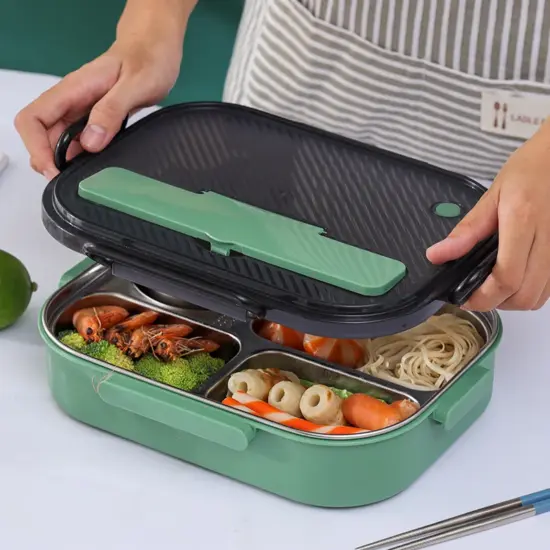jay@nbdho.com
Insulated Bags vs Insulated Lunch Boxes: Pros, Cons & Buying Recommendations
Article Content
Introduction
Choosing between insulated bags and insulated lunch boxes depends on usage, portability, durability, and thermal needs. Both serve to keep food at safe temperatures, but differ in design, convenience, and performance. 👜🥡❄️
1. 👜 Insulated Bags
-
Pros
-
Lightweight and easy to carry.
-
Flexible size accommodates multiple containers or bulk items.
-
Foldable and space-saving when not in use.
-
Ideal for catering, delivery, or family meals.
-
-
Cons
-
Less rigid protection; may crush fragile containers.
-
Insulation efficiency can vary by bag thickness and material.
-
May require additional compartments or organizers for meal separation.
-
-
Best Use Cases
-
Food delivery services and catering.
-
School or office lunches with multiple meal components.
-
Families carrying multiple items or beverages.
-
2. 🥡 Insulated Lunch Boxes
-
Pros
-
Rigid structure protects food and prevents spills.
-
Usually includes compartments for meal separation.
-
Reliable insulation for shorter meal durations.
-
Compact and easy to pack in backpacks or lunch bags.
-
-
Cons
-
Limited capacity; cannot hold multiple meals easily.
-
Heavier and less flexible than soft insulated bags.
-
Typically less foldable; occupies fixed space.
-
-
Best Use Cases
-
School children or office employees carrying single meals.
-
Short-duration temperature retention (2–4 hours).
-
Meals requiring separation and spill prevention.
-
3. ⚖️ Comparison Summary
| Feature | Insulated Bags | Insulated Lunch Boxes |
|---|---|---|
| Portability | High | Medium |
| Protection | Medium | High |
| Flexibility | High | Low |
| Capacity | Multiple meals or items | Single meal |
| Thermal Retention | Medium (depends on material) | High (short-term) |
| Best For | Delivery, catering, family | School, office, single meals |
4. 💡 Buying Recommendations
-
Daily Single Meals → Choose Insulated Lunch Boxes for structure and compartmentalization.
-
Multiple Meals / Catering → Opt for Insulated Bags for capacity and flexibility.
-
Temperature Priority → Consider thickness, material, and insulation type (EPE, foil, vacuum layer).
-
Durability → For repeated use, reinforced stitching, zippers, and food-grade liners matter.
-
Ease of Cleaning → Removable liners or dishwasher-safe materials improve hygiene.
5. 🌟 Key Tips
-
🖼️ Assess Usage Scenario: Delivery vs. personal lunch vs. multi-meal transport.
-
🔄 Check Insulation Performance: Choose tested materials and layers.
-
🌱 Consider Eco-Friendly Options: Reusable bags and boxes reduce waste.
-
📦 Look for Extras: Adjustable straps, compartments, and easy-clean features.
Conclusion
Both insulated bags and insulated lunch boxes have unique advantages. Bags offer flexibility and capacity for multiple meals, catering, or delivery, while lunch boxes provide structure, protection, and compartmentalized storage for single meals. Selecting the right solution depends on meal type, transport needs, and thermal retention priorities, ensuring food stays safe, fresh, and presentable. 👜🥡❄️✅


